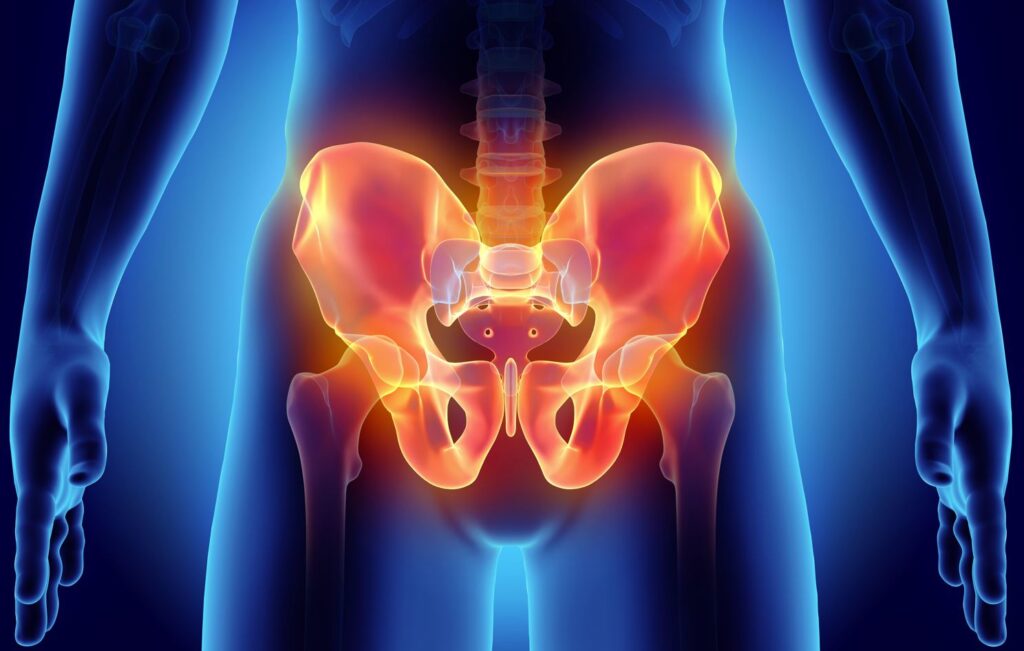Anterior Inferior Iliac Spine Avulsion Injury: An Overview

Introduction An anterior inferior iliac spine (AIIS) avulsion injury is a rare but significant type of injury that typically affects young athletes. It occurs when the anterior inferior iliac spine, a bony prominence on the pelvis, is torn away from the main part of the bone. This injury is most commonly associated with sports that require sudden and forceful hip flexion, such as soccer, gymnastics, and track and field events. Causes and Risk Factors AIIS avulsion injuries are caused by an abrupt, forceful contraction of the rectus femoris muscle, which is attached to the AIIS. This type of injury is more common in adolescents because their growth plates (areas of growing tissue near the ends of long bones) are weaker than the attached tendons and muscles. As a result, a powerful muscle contraction can lead to the avulsion of the bone fragment where the muscle is attached. Risk factors include participation in high-impact sports, inadequate warm-up or stretching before exercise, and a history of tight hip flexor muscles. Adolescents experiencing growth spurts are particularly at risk due to the rapid changes in their musculoskeletal system. Symptoms and Diagnosis The primary symptom of an AIIS avulsion injury is a sudden, sharp pain in the groin area or front of the hip, often accompanied by swelling and bruising. Athletes may also experience a decrease in hip range of motion and difficulty walking. Diagnosis typically involves a physical examination and imaging tests. X-rays can reveal the avulsed bone fragment, while MRI scans provide more detailed images of the soft tissues, including muscles and tendons. Treatment and Management Initial treatment for an AIIS avulsion injury focuses on pain relief and reducing inflammation. Rest, ice, compression, and elevation (RICE) are commonly recommended. Nonsteroidal anti-inflammatory drugs (NSAIDs) may also be prescribed to manage pain and swelling. Once the acute symptoms have subsided, physical therapy plays a crucial role in recovery. A tailored rehabilitation program aims to restore strength, flexibility, and range of motion. It’s important to gradually reintroduce activities to avoid re-injury. In severe cases, or if the bone fragment is significantly displaced, surgery may be necessary. Surgical intervention typically involves reattaching the avulsed fragment with screws or other fixation devices. Prevention Preventive measures include proper warm-up and stretching exercises, particularly focusing on hip flexibility. Athletes should also be educated about the importance of gradually increasing the intensity of their training and listening to their body to avoid overuse injuries. Conclusion An AIIS avulsion injury, while not common, can be a significant setback for a young athlete. Awareness and understanding of this injury are vital for early diagnosis and effective management. With appropriate treatment and rehabilitation, most athletes can expect to return to their previous level of sporting activity. However, prevention through proper training and conditioning cannot be overstressed to minimize the risk of such injuries.
Pelvic Fractures: Understanding the Risks, Symptoms, and Treatment

Introduction Pelvic fractures, though less common than fractures in other parts of the body, are significant injuries that often occur due to high-energy impacts, such as car accidents, falls from a great height, or severe sports injuries. They range from simple, low-risk fractures to complex injuries that can be life-threatening. Understanding Pelvic Fractures The pelvis is a ring-like structure of bones located at the base of the spine, responsible for supporting the body’s weight in both standing and sitting positions. It also protects various organs, including the bladder and intestines. Pelvic fractures can disrupt this critical structure and the organs it protects. Causes and Risk Factors High-impact Trauma: The most common cause of serious pelvic fractures. Car crashes, falls from significant heights, and crush injuries are typical examples. Low-impact Trauma: In older adults, especially those with osteoporosis, pelvic fractures can occur due to lower-impact events, like a minor fall. Athletic Injuries: Athletes, especially those involved in high-impact sports, might experience stress fractures in the pelvic area. Symptoms Severe pain in the hip or groin area Inability to walk or bear weight Bruising and swelling in the pelvic region Numbness or tingling in the groin or legs In more severe cases, signs of shock such as fainting, dizziness, and rapid heart rate Diagnosis Diagnosis typically involves a physical examination, review of the patient’s medical history, and imaging tests. X-rays are commonly used, but CT scans or MRI might be required for a more detailed view. Treatment Options Non-Surgical Treatment: For minor fractures, treatment may involve bed rest, pain management, and physical therapy. Surgical Treatment: More severe fractures may require surgery to reposition and stabilize the broken bones. This could involve the use of screws, plates, or rods. Rehabilitation: Post-treatment, rehabilitation is crucial for regaining strength and mobility. This might include physical therapy and exercises. Complications Complications can include damage to the organs protected by the pelvis, nerve damage, and in severe cases, blood loss leading to shock. There is also a risk of blood clots, particularly in the legs, due to immobility. Preventative Measures For athletes, proper training and use of protective equipment can minimize risk. In the elderly, measures to prevent falls and maintain bone health are vital. Conclusion Pelvic fractures, while serious, are treatable injuries. Recovery depends on the severity of the fracture, the patient’s overall health, and the effectiveness of the rehabilitation program. It is essential for individuals with a pelvic fracture to closely follow their medical provider’s advice and engage in prescribed rehabilitation activities to ensure the best possible outcome.